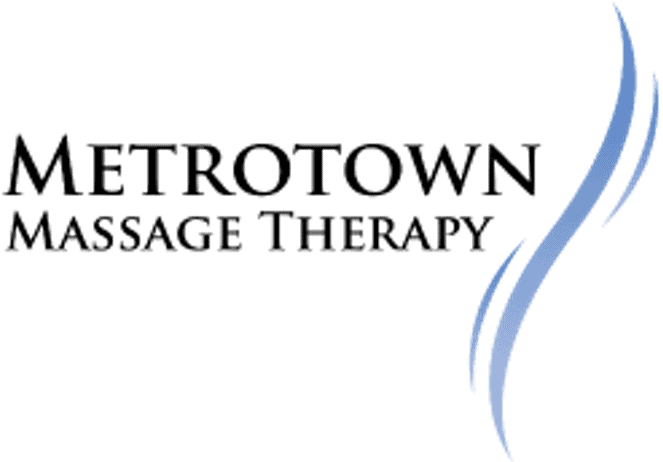Proven Ways To Relieve Your Sciatica Pain Recommended By Massage Therapists
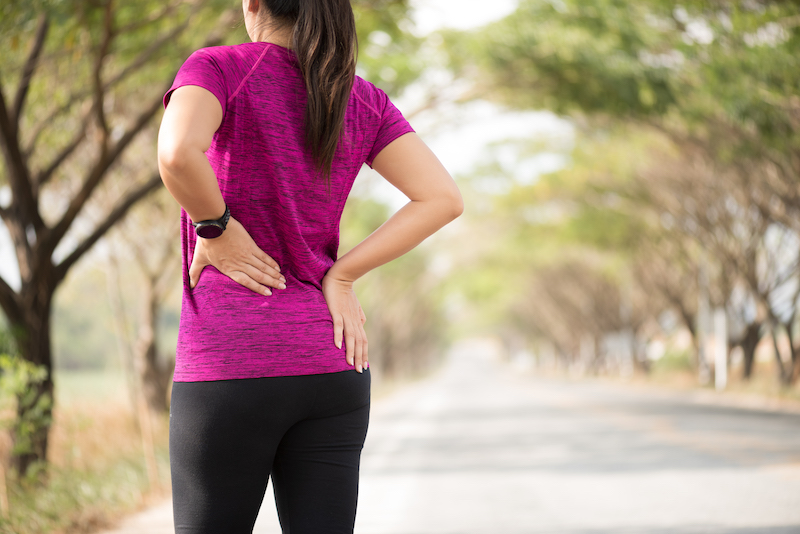
What Is Sciatica?
Sciatica is a medical diagnosis characterized by lower back pain and radiating leg pain that results from irritation of the sciatic nerve roots.
The sciatic nerve passes underneath the piriformis muscle, runs down the leg, and terminates behind the knee where it splits into different branches that innervate the leg.
The innervation of the sciatic nerve provides not only direct and indirect motor function to one’s lower body muscles, but sensations to parts of one’s lower legs and feet as well.
How Is Sciatica Related To Low Back Pain?
Due to the location and innervation of the sciatic nerve, when a patient is experiencing sciatica symptoms, they will typically have back pain as well.
This lower back pain can be classified into either acute or chronic pain. In the short-term (acute sciatica), this pain commonly persists for about 4-8 weeks, though it may persist for a longer period of time in chronic sciatica.
In general terms, the prevalence of low back pain is very high in industrialized countries, with some articles claiming rates of between 60-70% that affect the population.
Where Is The Sciatic Nerve?
The photo above illustrates the close proximity the sciatic nerve has to the piriformis muscle.
Due to its neighbouring position to the sciatic nerve, spasms of the piriformis muscle can pinch the nerve, resulting in the initiation of a pain cascade and the onset of sciatica
How Prevalent is Sciatica?

It has been estimated that up to 40% of individuals in a population experience sciatica symptoms at one point in their lifetime.
In healthcare clinics, treating patients who have sciatica are often amongst the most common presenting cases.
How Does Sciatic Pain Commonly Present?
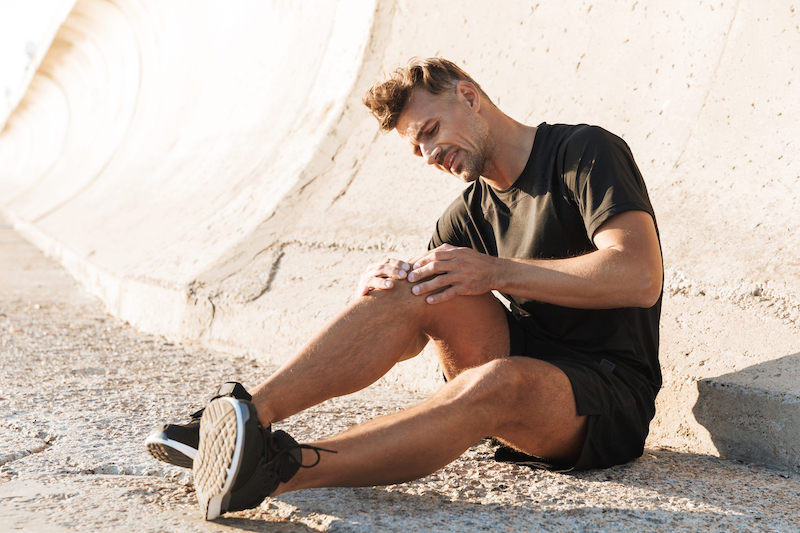
Most commonly, sciatic pain is unilateral or one-sided, and is often described as an aching, prickling, and/or burning pain.
Affected areas include, but are not limited to, the buttocks, lower back, below the knee, on the back of the calf, on the sole of the foot, or even into the groin/inguinal area.
Flexion of the lumbar spine, coughing, and twisting and bending movements can aggravate the pain.
What Causes Sciatica?
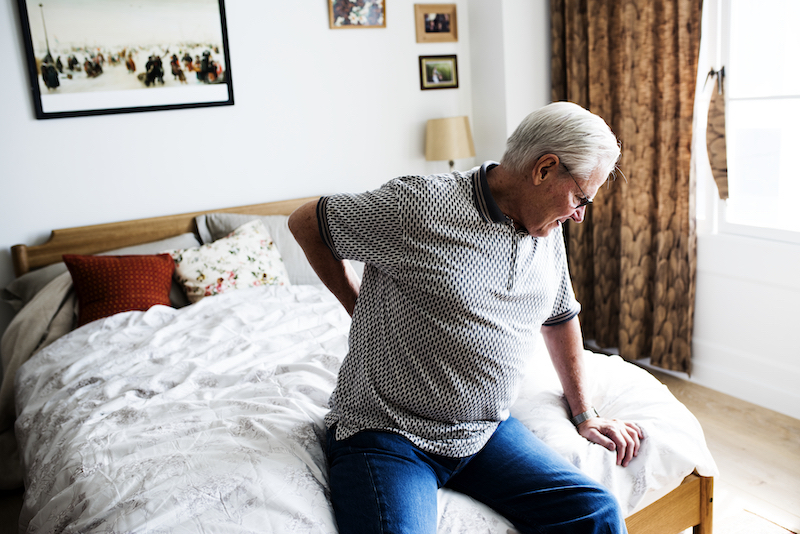
Below is a list of some of the most common causes, but please keep in mind that this is not meant to be an exhaustive list:
Spinal causes (majority of cases)
- Lumbar bulging or herniated disc
- Spinal stenosis
- Degenerative disc disease
- Spondylolisthesis
- Spinal tumors in the lumbar region (rare)
Non-spinal causes
- Piriformis syndrome
- Trauma
- Post-operative complications
- Repetitive strain injury that places strain on the muscles and joints that surround the spine and sciatic nerve area
Sciatica Or Piriformis Syndrome? What Is The Difference?

While it can be difficult to differentiate sciatica from other conditions creating similar symptoms of pain in the low back and leg(s), here are some distinct symptoms of sciatica:
- Low back (lumbar spine) pain
- Pain felt only on one side of lower body (eg. one leg)
- Deep pain or burning feeling in the glutes of the associated side
- “Pins and Needles”
- Heaviness or weakness in the leg, and/or pain upon a straight leg raise.
These symptoms arise due to irritation of the sciatic nerve due to an injury or spasm, causing swelling or compression of the piriformis muscle.
When trying to characterize piriformis syndrome pain, due to the variance in orientation of the sciatic nerve to the piriformis muscle which passes either next to or through the piriformis muscle, one is more likely to experience sciatica-like symptoms especially when the nerve passes through the muscle in the gluteal area.
This will then initiate low back and hip pain, ultimately causing poor movement and imbalance leading one to experience what is known as Piriformis Syndrome.
In fact, the initial symptoms of piriformis syndrome will be between the low back, hip and buttock regions that result in pain, tingling, or numbness especially in the buttock(s).
This pain can arise due to a history of trauma to the muscle or as a cumulative result of vigorous activities that engage the piriformis muscle (eg. long distance running).
Other actions, such as stair climbing or long periods of sitting, that apply pressure to the piriformis muscle can also contribute to the pain.
However, experiences of more severe chronic pain, typically running down the back of a leg to the associated foot, is important to recognize as it may be sciatica pain.
At the end of the day, the reason for one’s sciatica may not necessarily be attributed to Piriformis Syndrome, but it should be on the differential diagnosis list.
A qualified healthcare professional should be able to differentiate between the two easily when they perform their history and physical exam.
I Have Sciatica! Now What?

Don’t worry! Sciatica pain is not as uncommon as you may think, as mentioned previously a significant proportion of people have experienced it at least once in their lifetime.
It’s likely that simple home stretches, and conservative management like visiting your chiropractor, massage therapist, or physiotherapist will help to alleviate your pain.
The blog post endeavours to go through some simple techniques to help relieve your pain
How Can Massage Therapy Help Sciatica?
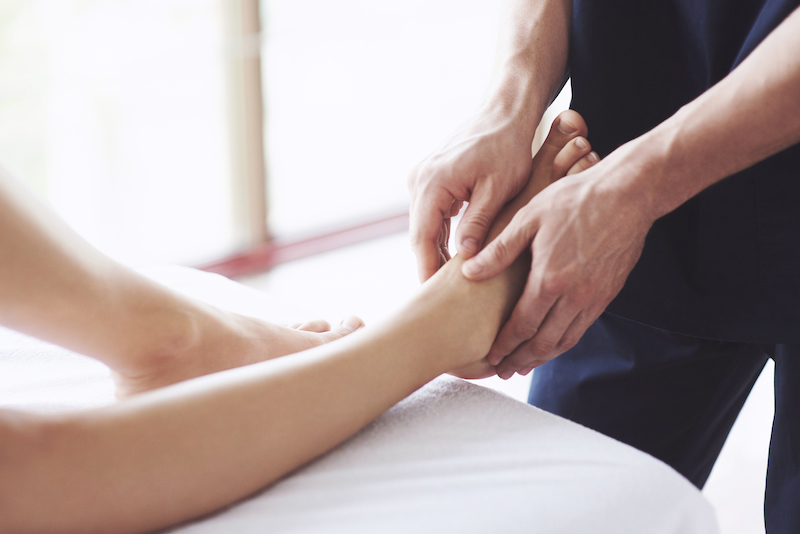
Massage therapy is a natural form of pain relief that can relieve your sciatic symptoms and greatly improve your quality of life.
By effectively soothing your tight muscles and stimulating the release of endorphins, massage therapy can help promote relaxation and increase your range of motion, whilst diminishing your perception of pain and general feelings of tightness.
Further, it is noteworthy to mention that tightness of muscles in close proximity to the sciatic nerve, namely your trunk, core, and lower back muscles, can add pressure to the nerve roots in your lower back.
This pressure contributes to the irritation of your sciatic nerve and is associated with the characteristic lower back pain and radiating leg pain of sciatica.
Massage therapy can stretch, loosen, and elongate these tight muscles, reducing the pressure on your sciatic nerves and improving function in your lower back and legs.
Also, soft-tissue massage can help increase your overall feeling of well-being.
Massaging stimulates specific pressure receptors in your brain, resulting in the release of endorphins into your bloodstream. Endorphins are the natural hormones produced by your body that are associated with feelings of pleasure, deep relaxation, and pain relief.
Stimulation of these pressure receptors is also associated with reduced levels of cortisol, the hormone responsible for your body’s response to stress.
As high levels of stress and anxiety can lead to increased pain, the cortisol-reducing effects of massage therapy can be an effective form of pain management.
What Is The Best Type of Massage For Sciatica?
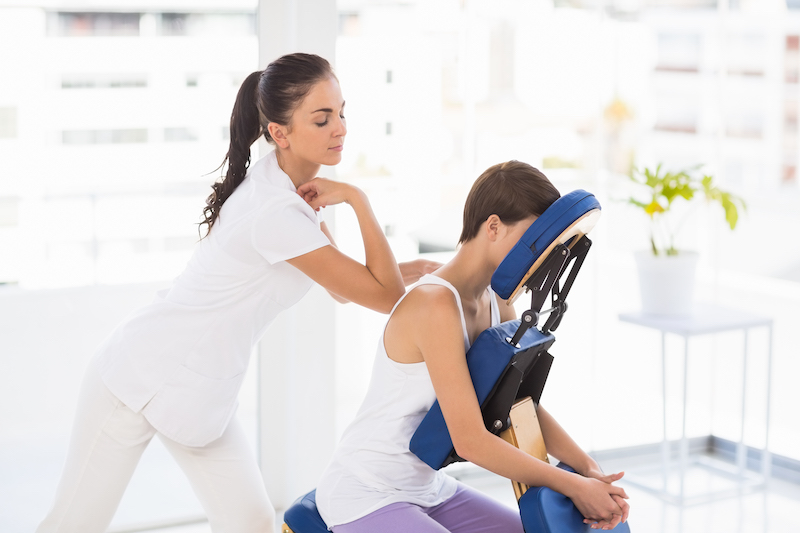
There are several types of massage therapy that you can seek, but which one is the best for sciatica?
As there currently isn’t enough research that supports one type of massage therapy over the other, choosing one depends on your personal preference and what you find works well for you.
Listed below are the most common types of massage therapy you may find:
Deep Tissue Massage
- Uses slow strokes and firm pressure to target the deeper layers of tissue.
Neuromuscular massage / Trigger point therapy
- Uses concentrated pressure on points in the body that hold tension and/or pain (trigger points).
Myofascial Release
- Uses slower stretching on the stiff and immovable areas within myofascial tissues, the connective tissue that surrounds and supports your muscles.
Do I Need To Consult A Doctor Or Get A Referral From A Doctor For Registered Massage Therapy (RMT) Treatments And Sciatica?

A doctor’s referral is not necessary for RMT treatments, as registered massage therapists are recognized, primary health care providers in British Columbia, Canada.
When choosing an RMT, it is important to make sure that they are a licenced professional.
RMTs have been a regulated health care profession under British Columbia legislation since 1946, and is regulated by the College of Massage Therapists of BC.
They are required to abide by the College’s standards of practice and standards of professional ethics to ensure you receive safe, ethical and effective health care.
However, if you have a history of cardiovascular disease or other serious underlying medical conditions, please consult your doctor first about whether massage therapy is an appropriate option for your sciatica pain, or speak candidly about them when doing your initial assessment with your RMT.
What Can I Expect During My First Visit To A RMT?

Your first appointment with a RMT will include an initial history of the complaint, physical examination, relaying informed consent/treatment plan, and the subsequent treatment.
In the history and physical exam, your RMT will ask you about your condition and may perform orthopedic and range of motion testing to identify structures that are painful.
They will then relay their findings, accept any questions you may have, and then go through consent with regards to treatment.
The RMT will then ask you to get undressed within your personal comfort level, and to get under the sheet provided.
They will leave the room to protect your privacy and will knock for your permission to re-enter.
It is often recommended for women to wear a sports bra and shorts and for men to wear shorts.
However, RMTs are also capable of working through clothing, so it is not necessary for you to undress if you are uncomfortable with doing so.
During the massage therapy treatment, the RMT will regularly check in with you to make sure you are comfortable with the environment and the amount of pressure being used.
If anything feels uncomfortable or painful, please do not hesitate to let the RMT know so they can adjust the treatment accordingly.
At the end of your treatment, the RMT will once again leave the room for your privacy and will knock for permission to re-enter.
During this period, they may discuss any recommendations for follow-up treatments and will oftentimes recommend exercises that can help with your recovery.
It’s important that at any time, if you have a question or concern for your RMT, ask it immediately.
How Can I Self Massage for Sciatica?
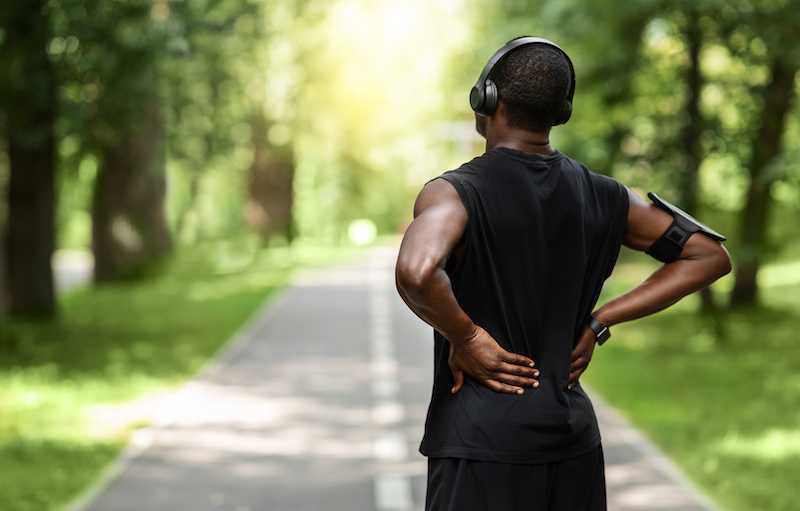
In addition to seeking massage therapy, there are various ways you can self-massage for sciatica relief in the comfort of your own home.
Below are some options you can try.
Palm and Thumb Massage
- Using your palms, rub your lower back, downwards towards your buttocks.
- Then place your hands on your lower back with your thumbs facing your spine and your fingertips wrapped around the sides of your body.
- Use your thumbs to press down on the outer muscles of your spine, slowly and firmly massaging along the spine of your lower back.
Tennis Ball Massage
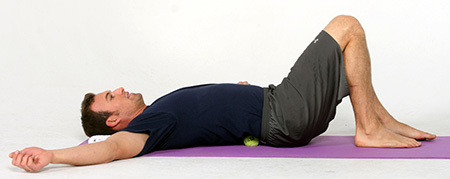
- Wrap two tennis/lacrosse balls together using tape, towel, or sock and place them on the floor.
- Sit on the floor with your knees bent and gently lay the aching area of your back on the two tennis balls.
- Maintain your position for approximately one minute, or until you feel tension has been released.
- Repeat for other aching areas of your back.
- Assume the fetal position and rest for a few minutes before standing.
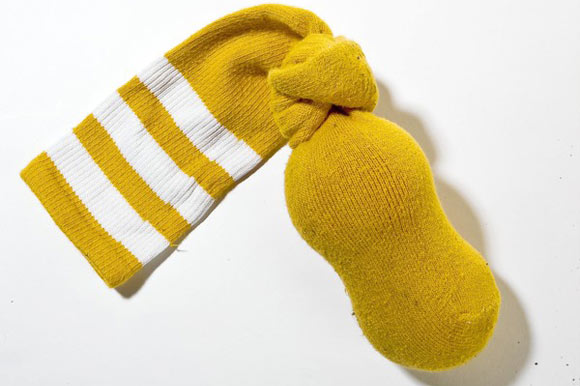
- Wrap two tennis/lacrosse balls together using tape, towel, or sock and place them on the floor.
- Sit on the floor with your knees bent and gently lay the aching area of your back on the two tennis balls.
- Maintain your position for approximately one minute, or until you feel tension has been released.
- Repeat for other aching areas of your back.
- Assume the fetal position and rest for a few minutes before standing.
Knuckle Massage

- Lay on your back with your knees bent.
- Place your fists under your lower back, with your knuckles facing upward on each side of your spine.
- Maintain your position for approximately one minute.
- Assume the fetal position and rest for a few minutes before standing.
How Else Can I Use a Tennis Ball to Relieve My Sciatic Pain?

As described previously, irritation of the musculature around the sciatic nerve can contribute to your sciatica.
As a result, using a tennis ball as a way to release trigger points and tension in muscles surrounding the sciatic nerve can be an effective way to modulate pain.
Let’s Try Standing First…
For 30 seconds to a minute, use a tennis ball, lacrosse ball or any firm ball to roll against your lumbar, gluteal, and piriformis muscles.
Be sure to keep the ball in motion, and only hold specific points for short periods of time.
You should experience a gentle pressure and a release after completion of the exercise. The pressure should not result in pain, nor numbness down your leg.
Repeat this action 5-10 times each day, or as directed by your doctor.
Let’s Use The Tennis Ball On Your Low Back…
You can also use a tennis ball to massage the lumbar paraspinal muscles on either side of your spine by using a wall. Ensure, when performing this exercise, that you do not apply pressure directly to your vertebrae.
Pressure can be applied for 30 seconds – 1 minute in one area, and moved to different parts as needed.
The amount of pressure should be mild to moderate, and not elicit pain.
Ready For Something Harder With A Tennis Ball?
See the video below for a demonstration of which area you should target with your tennis ball. Hold the ball in place for a duration of 15 to 30 seconds, and make sure to move it occasionally. Again, ensure that the degree of pressure you use does not result in pain or numbness down your leg.
What Are Some Exercises I Can Do for Sciatica?
These simple stretches/exercises can also be done at home to help with your sciatic pain.
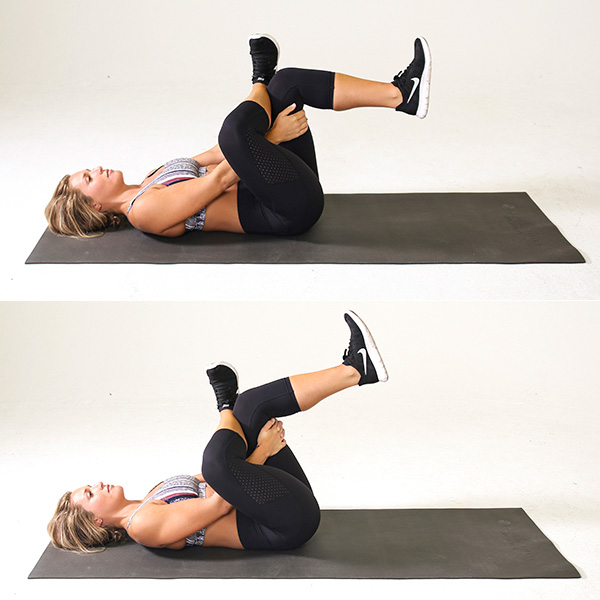
Supine or Seated Piriformis Stretch
Supine Version
- Lie on your back on a mat with your knees up and feet flat on the ground.
- Cross the leg of the affected side so your ankle/shin rests on your other thigh.
- Then gently, pull on the knee of the crossed leg towards your chest just enough that you feel the stretch deep in your glute muscle.
- If you do not feel a stretch, grab the thigh of the affected side and pull it towards your chest.
- Otherwise, hold the position for 5 deep breaths, and then switch to the other side and repeat.
Seated Version
- Sit nice and tall on a firm chair to start, and then cross your right leg so that your right ankle rests on your left thigh.
- At this point you should feel a deep stretch along the back of the right thigh into the buttocks.
- If not, ensure you are still sitting up nice and tall as you exhale and hinge forwards at the hips and press down on the right knee.
- Whatever your depth is in this stretch, hold the position for 5 deep breaths, and then switch to the other side and repeat.
Long Adductor (Groin) Stretch
- Sit on the floor with your legs outstretched with a slight bend in the knees, and place your legs as far out as they go in opposite directions.
- Then sit up nice and tall and rest your palms on the floor in front of you, and gently hinge at the hips, letting your palms slide forwards.
- Only go as far forwards until you feel a light stretch, and hold for 5 deep breaths.
Short Adductor (Groin) Stretch
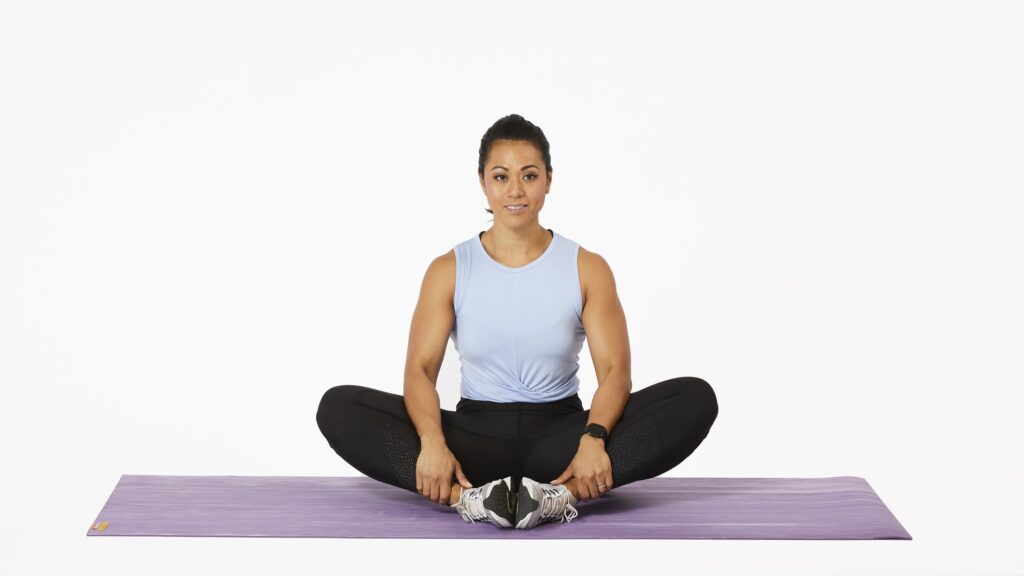
- Sit on the floor with the soles of your feet touching and hold your ankles with each hand and inhale deeply and stay in this position for 5 deep breaths.
- If you do not feel the stretch, gently push down on your knees with your elbows.
- Stop if you feel any pain, and ease off pushing down on your knees a couple of inches before you stay there for 5 deep breaths.
Knee Hug Stretch
- Lying on your back on a mat, tuck your chin down slightly (use a thin book or a thinly folded towel for more comfort), and bend your knees so that your feet are flat and hip width apart.
- Relaxing the upper body, using both hands hold your right thigh just below the knee joint and hug the knee towards your chest.
- At this point you may already feel a stretch in the low back, hip, and buttocks on the right side.
- If not, gently start to straight the right knee as you continue to hold the leg until you feel a slight stretch.
- Then hold for 5 deep breaths, before lowering the leg and returning to the starting position, and then trying it on the left side.
- For time efficiency, this can be tried by hugging both knees towards your chest.
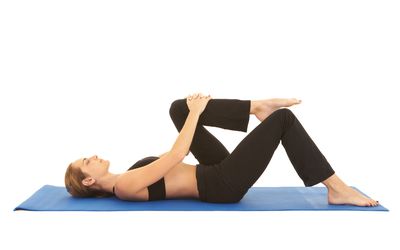
The Home Exercises Listed Above Are Not Working – What Should I Do Now?
Since the above stretches are meant to be a general overview, it’s likely that you may need additional guidance from a trained medical professional.
Please contact a trusted chiropractor, physiotherapist, acupuncturist, or another regulated healthcare professional in your community for an assessment and appropriate treatment.
Good luck!
